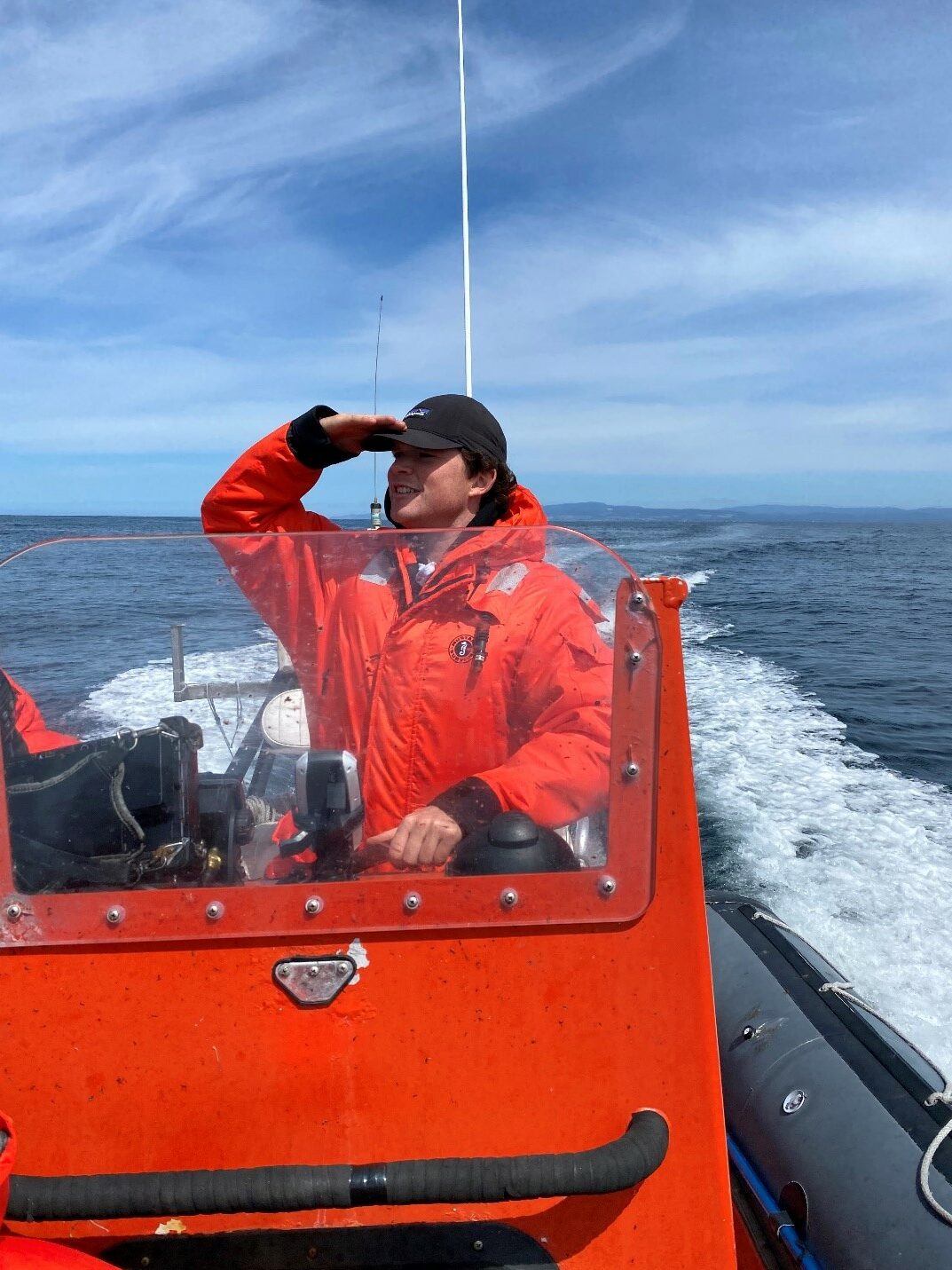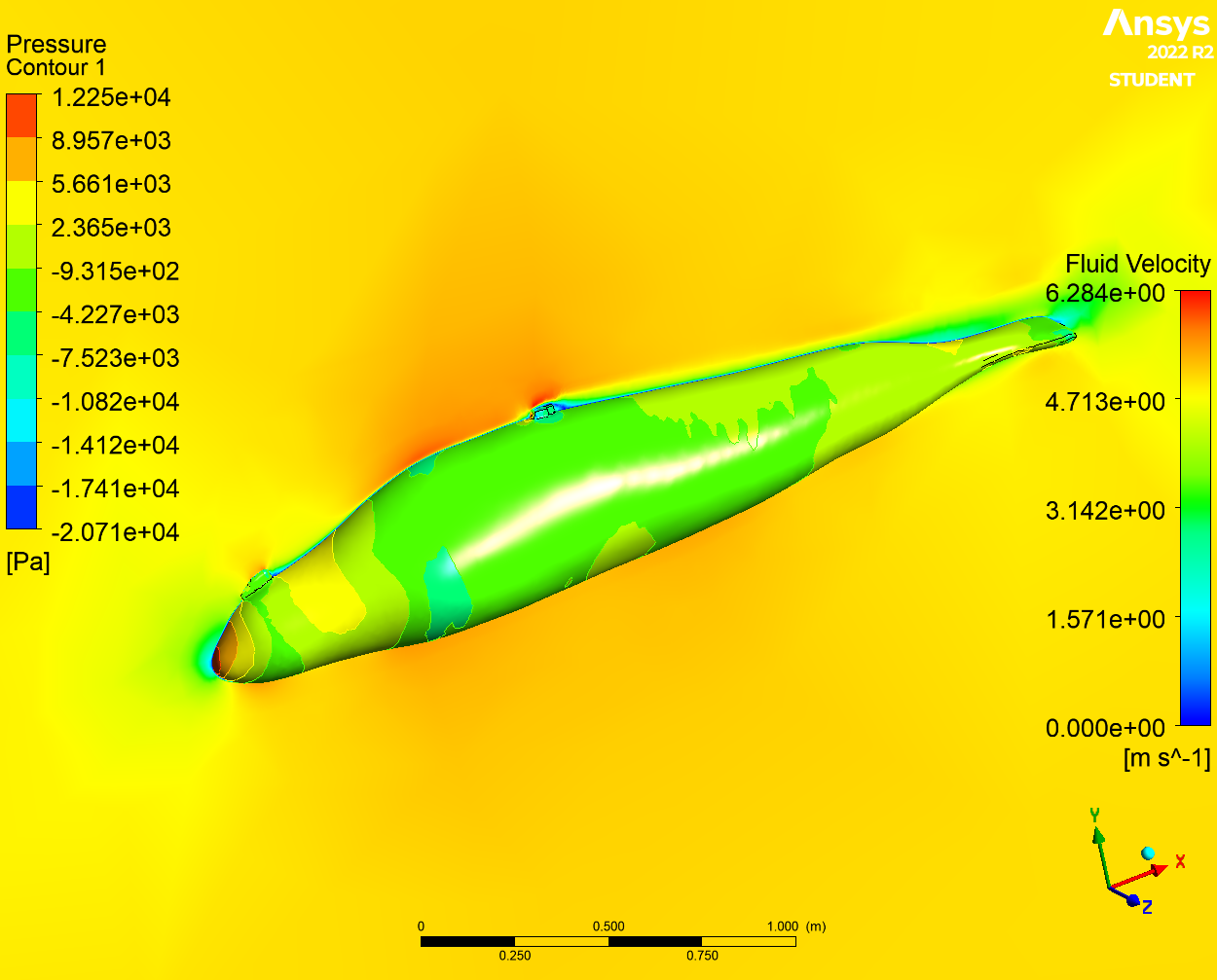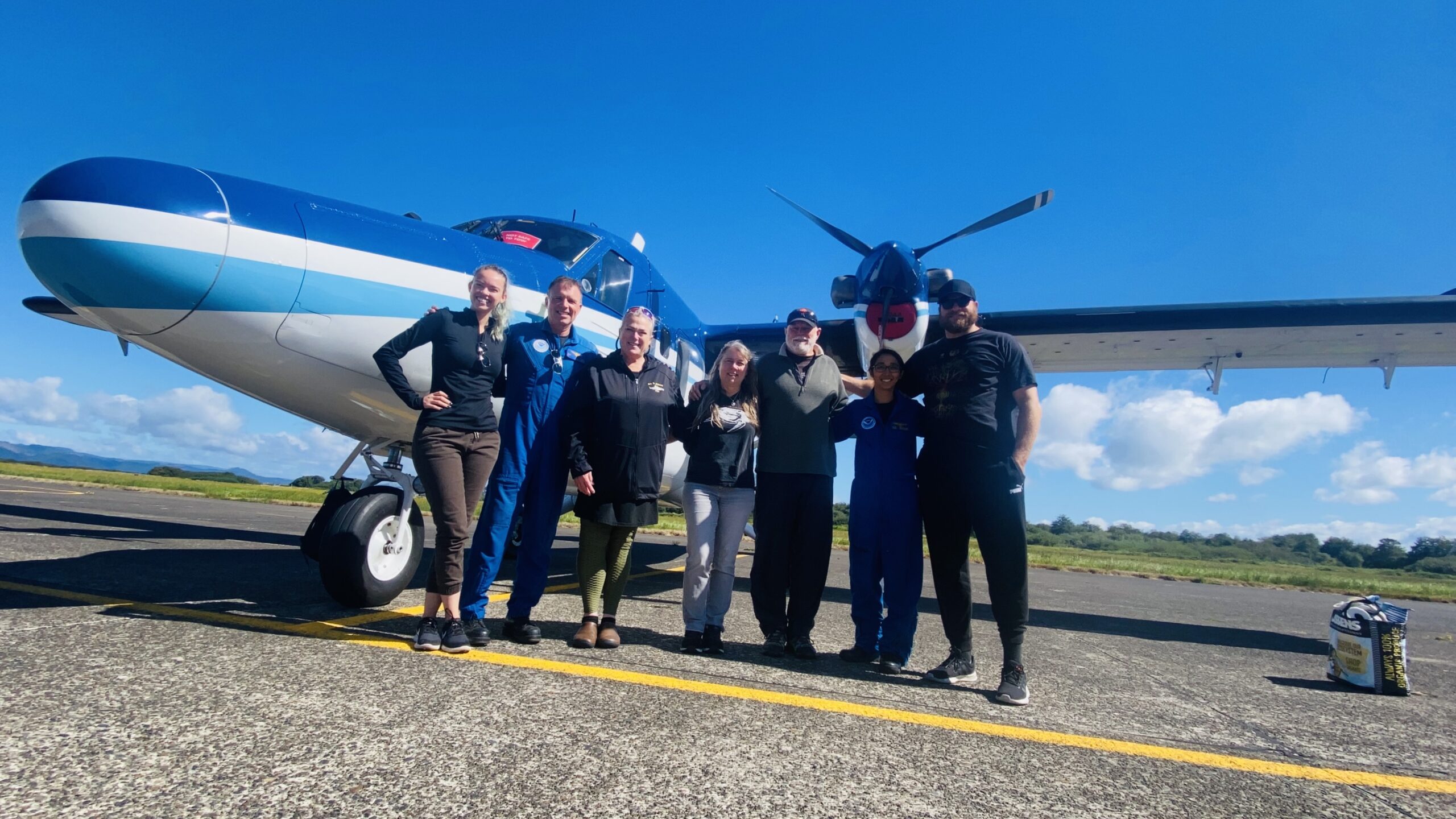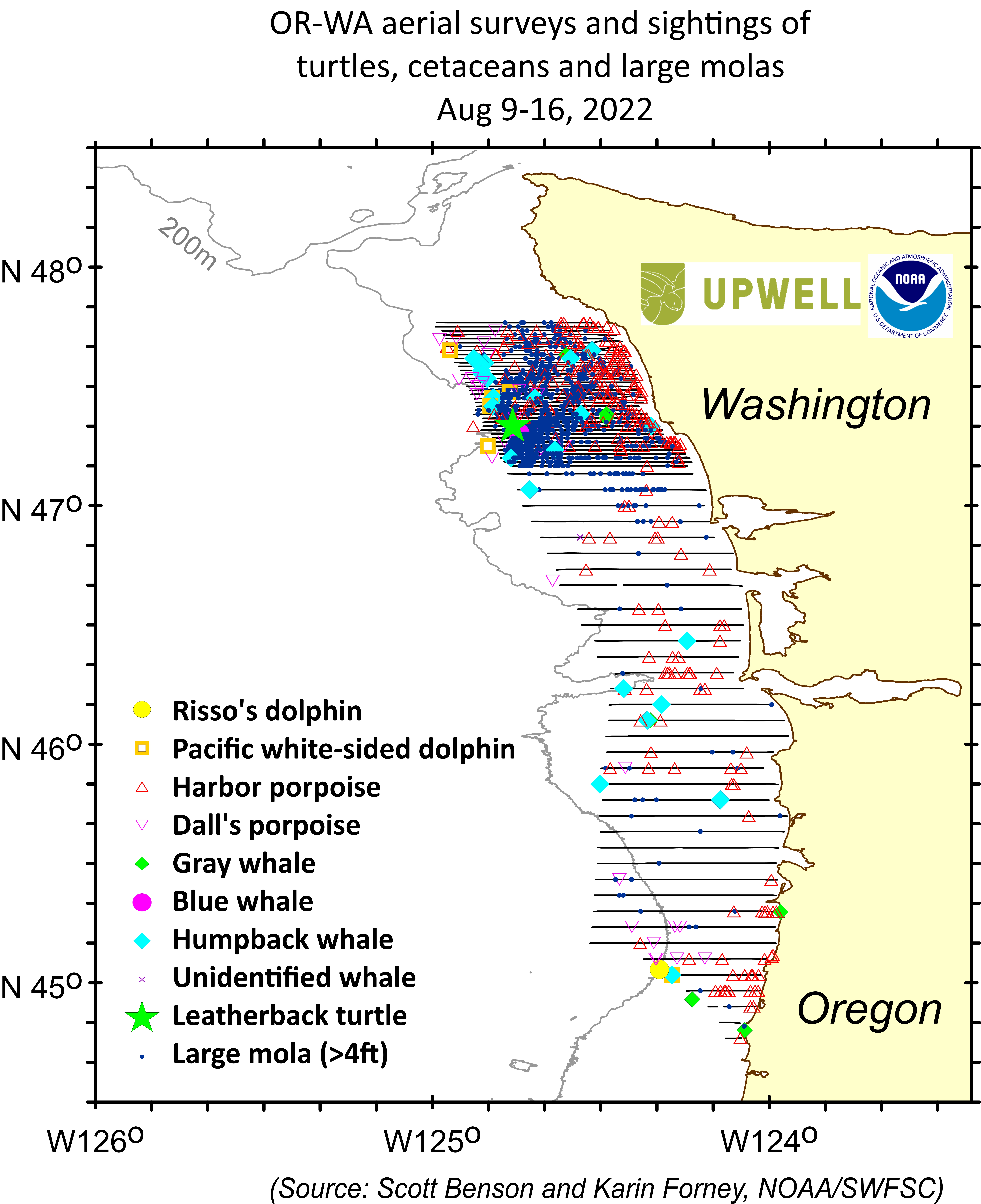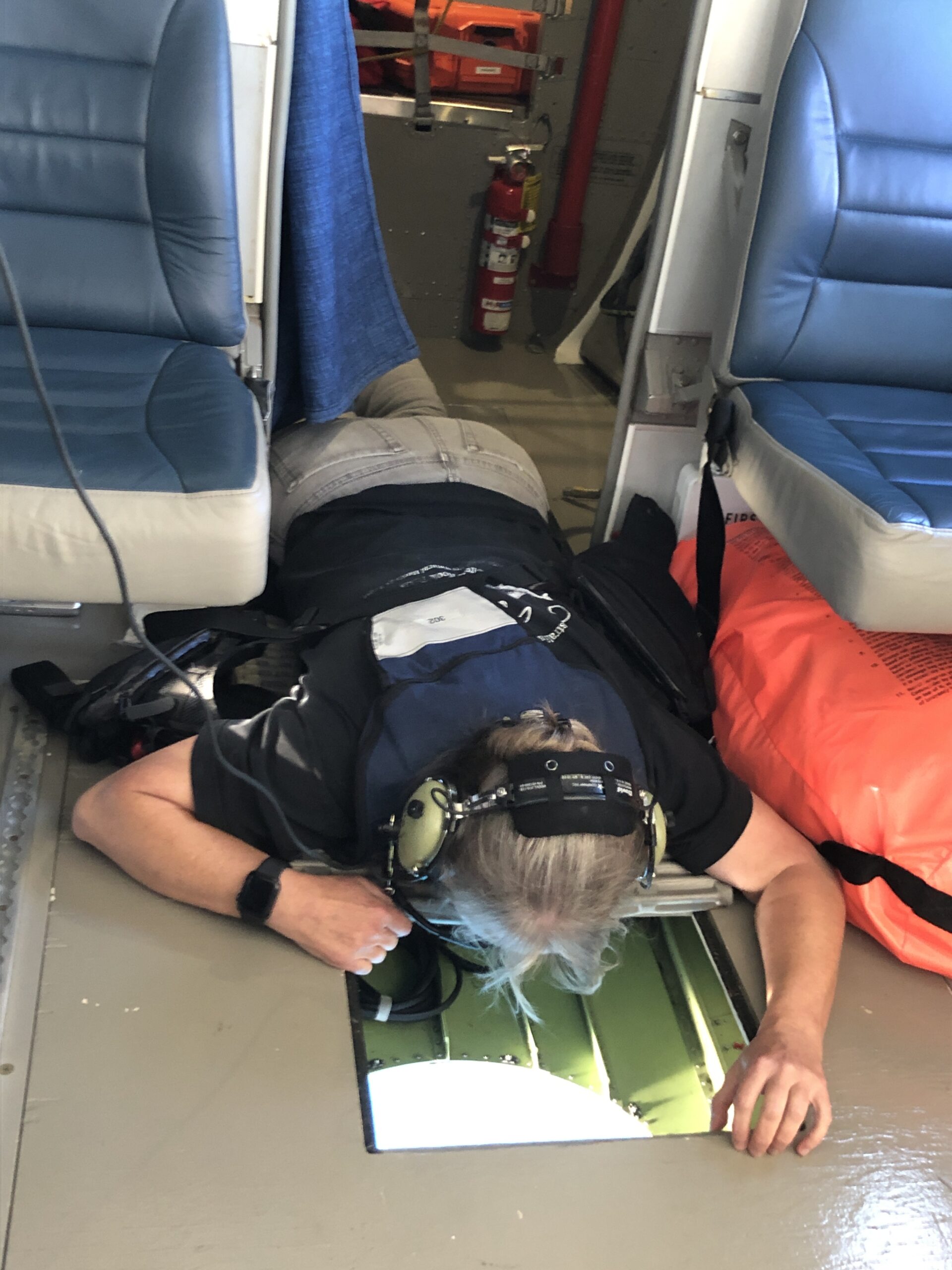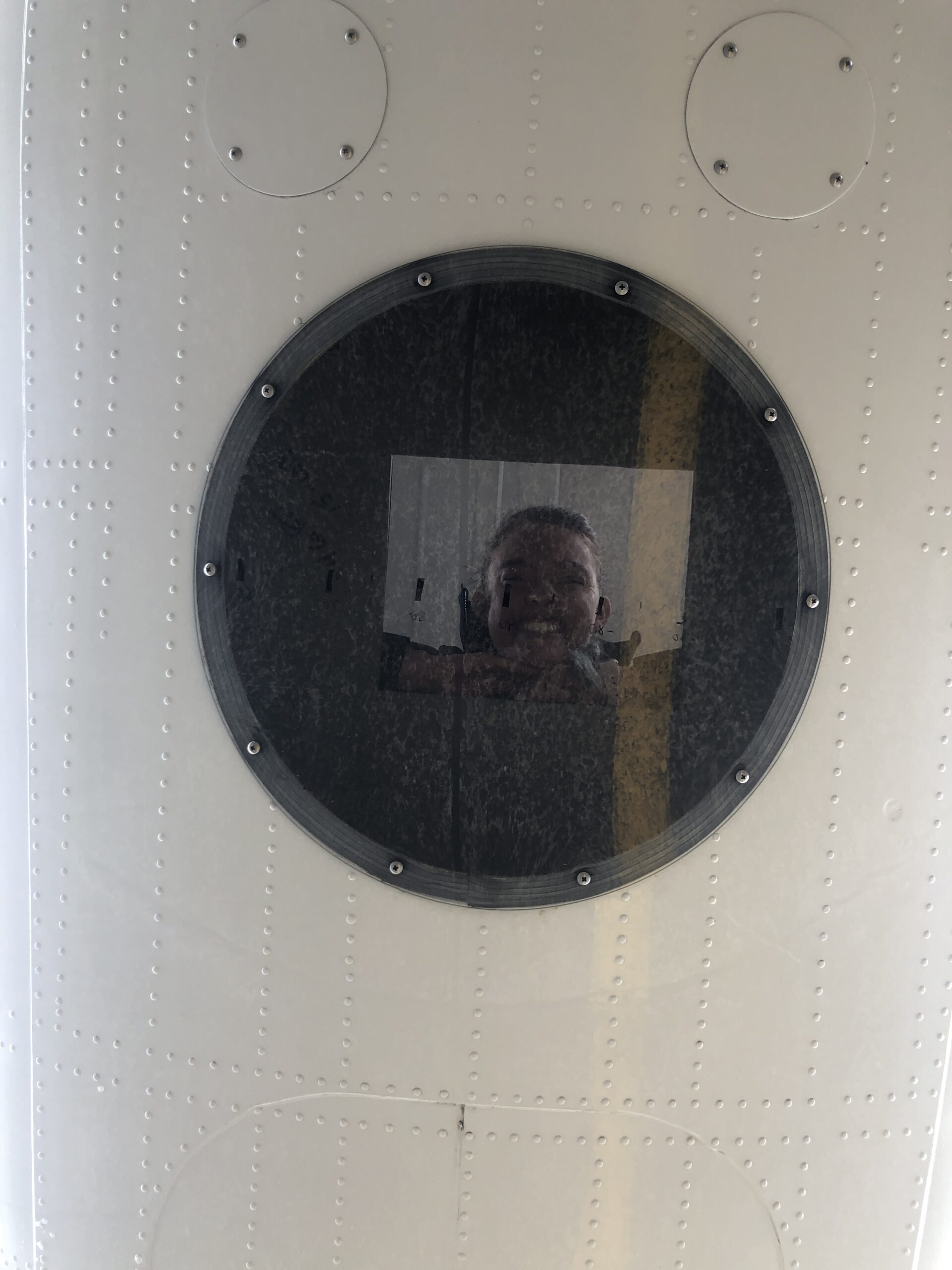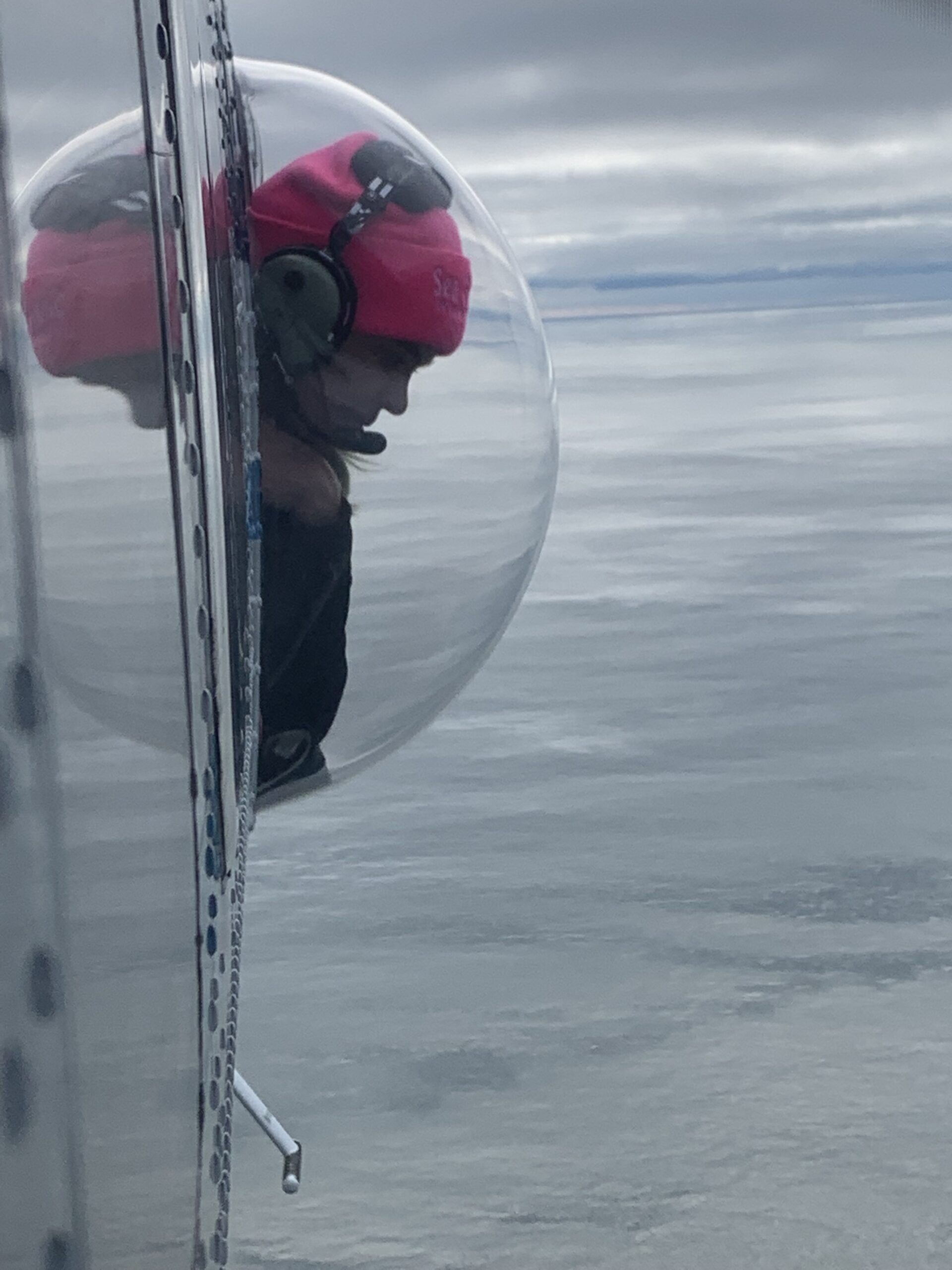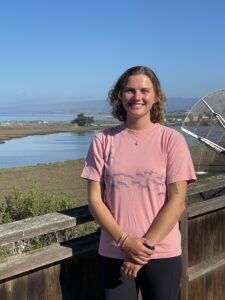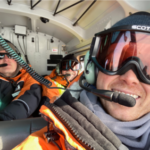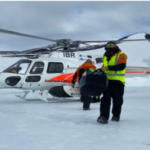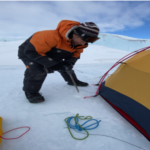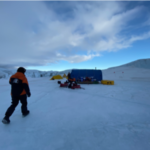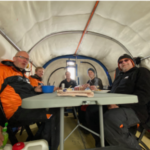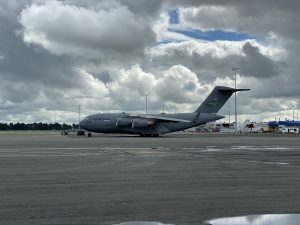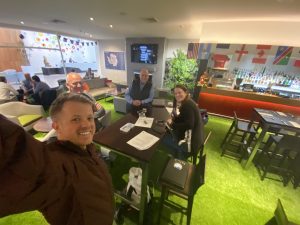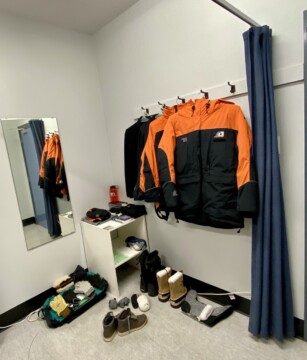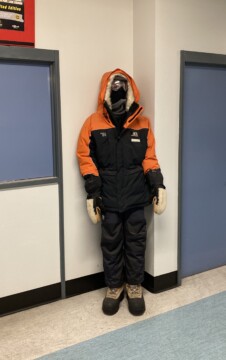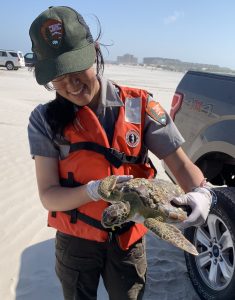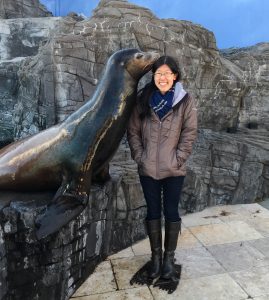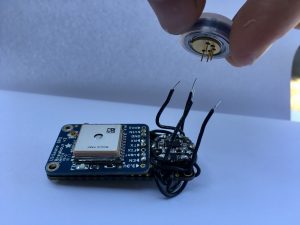Congratulations to our very own Parker Forman and Daphne Shen for recently defending their theses'.

Parker Forman
Thesis Abstract:
I described the at-sea behavior of emperor penguins (Aptenodytes forsteri) during late chick-rearing at Cape Crozier. Analyzing data from eight penguins, I investigated how intrinsic factors, including sex, size, and body condition influenced their behaviors. Penguins exhibited mean trip durations of 10.6±3.4 days, covering a daily distance of 55.7±8.0 km. Penguins predominantly performed dives within the upper 200 meters of the water column (90.7±26.5%), with a smaller proportion of dives (9.3±2.0%) reaching greater depths. Deeper dives were typically associated with shallow bathymetry. Penguins conducted an average of 1,860±681 dives with maximum depths of 455.8±32.6 m and durations of 12.9±2.4 minutes. Penguins spent 66.4±14.8% and 43.9±4.4% of their time at sea resting and diving.
Penguins with similar behaviors were categorized into groups: Group I foraged near the continent and traveled to the Ross Bank, and Group II predominantly foraged near the continent. I found significant differences in foraging behaviors between the groups and sexes. The composition of these groups was influenced by sex. Group I mostly comprised males, while Group II were females and one unknown sex. Females displayed higher dive frequencies per day (Females (F):186±17, Males (M):151±4), shallower maximum depths (F: 432.2±29.4 m, M: 476.8±12.8 m), and shorter durations (F: 3.2±0.7, M: 3.9±0.3). Possible explanations for the observed differences between male and female penguins include energetic requirements, prey preference, physical characteristics, and niche differentiation, which can shape their distinct foraging behaviors.
Furthermore, results from this study indicate that penguin behaviors were also influenced by the physical characteristics and condition of their bodies. This finding suggests that there may be an optimal body condition for achieving greater diving depths. Penguins with intermediate body conditions may possess a more efficient physiological adaptation for sustained deep diving, enabling them to access resources inaccessible to individuals with lower or higher body compositions.
This study advances our understanding of late-chick-rearing penguins and the influence of intrinsic factors on their behavior. The findings indicate that emperor penguins exhibit divergent strategies influenced by sex and physical condition, leading to variations in dive behavior and bathymetry use. These sex-based disparities in penguin behavior highlight distinct ecological roles for each sex within the species. These findings provide a novel description that underscores the remarkable adaptations of emperor penguins in successfully navigating dynamic environments at Cape Crozier.
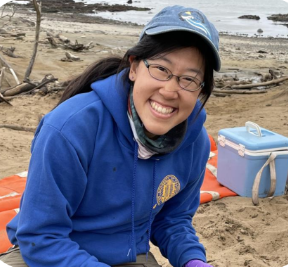
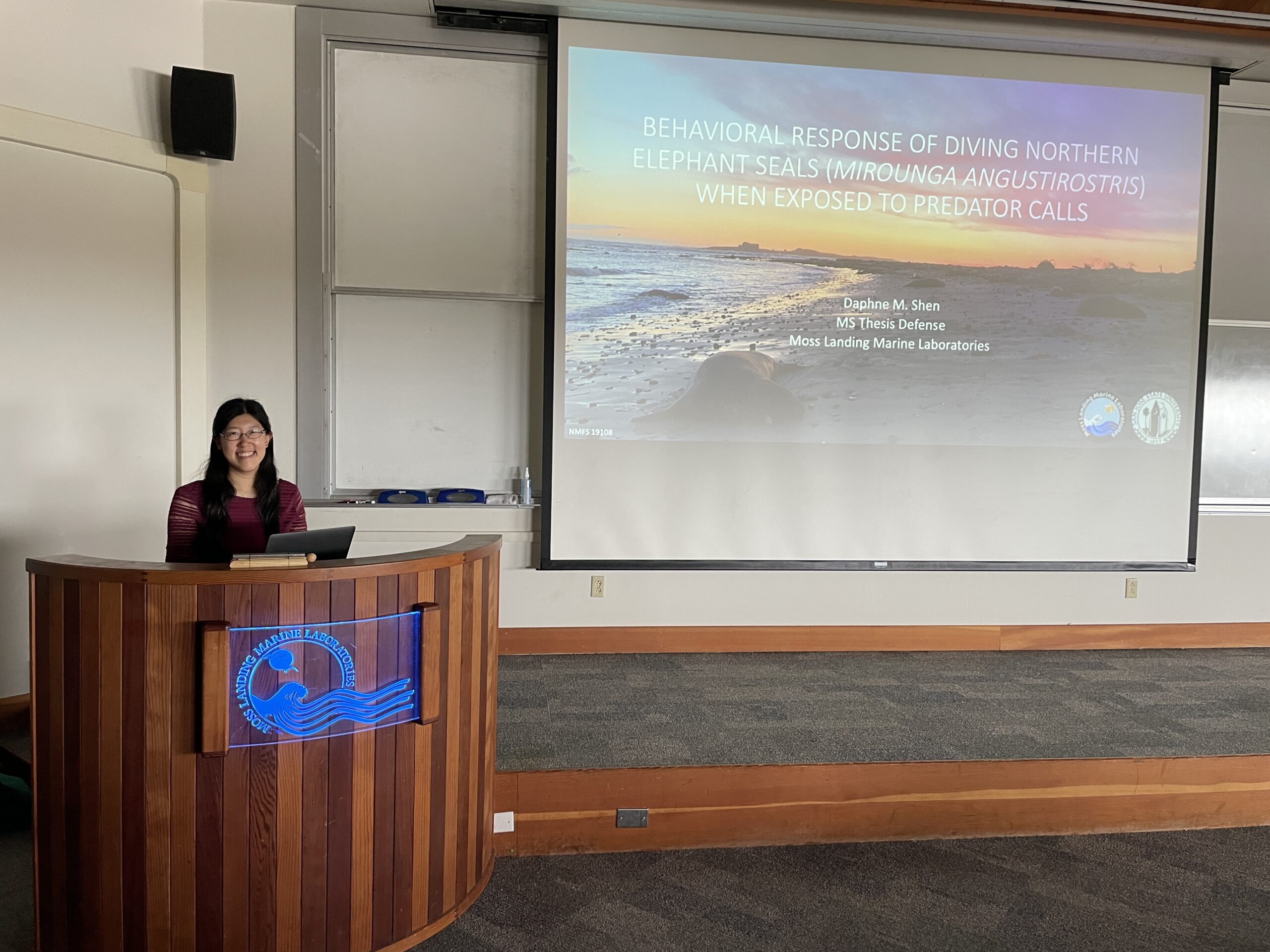
Daphne Shen
Thesis Abstract
Understanding how marine mammals respond to and recover from acoustic stressors is crucial if underwater noise increases. The use of an animal-borne biologger that combines a speaker with a motion sensor allows for the collection of whole-dive and fine-scale data over repeated exposures under identical experimental parameters. This study determined whether northern elephant seals (Mirounga angustirostris), a model for deep-diving marine mammals, exhibited a stereotypical behavioral response when exposed to killer whale whistles, an acoustic stressor. I examined changes in dive characteristics, measured duration of altered response, and observed behavior in response to repeated exposures. When exposed to the playback on ascent, the elephant seals performed an escape response consisting of a dive inversion during which they increased activity and displayed more variation in swimming direction. However, the seals returned to baseline diving behavior immediately after the exposure dives, suggesting they recover quickly from disturbance. After repeated exposures, the seals continued to perform dive inversions but reduced the extent of their responses over time. Even though northern elephant seals appear to recover quickly from this acoustic stressor, the initial strong behavioral response still causes an increase in energy expenditure that could be detrimental over time, especially if they are continuously faced with disturbances. Integrating behavioral responses with physiological measurements will help us fully comprehend how these animals change their diving behavior in response to increased sounds in the ocean.


